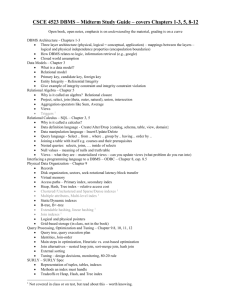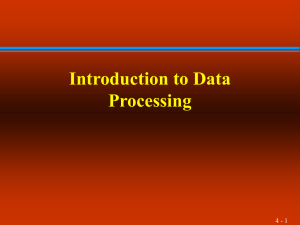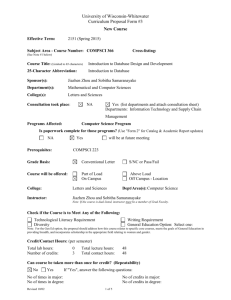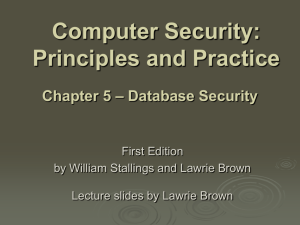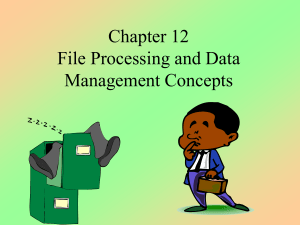Database Systems
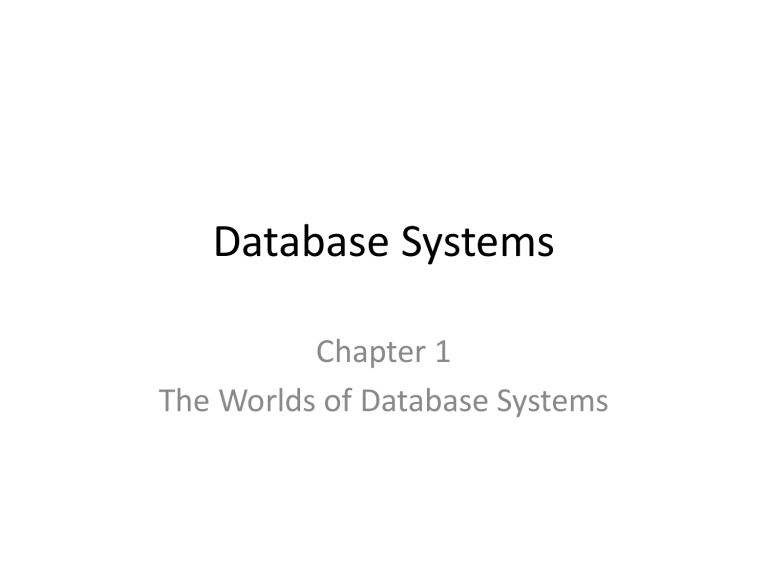
Database Systems
Chapter 1
The Worlds of Database Systems
Section 1.1
Evolution of Database Systems
The DBMS is expected to :
1 . Allow users to create new databases and specify their schemas ( logical structure of the data ) , using a specialized data - definition language.
2 . Give users the ability to query the data ( a “query" is a question about the data ) and modify the data , using an appropriate language , often called a query language or data - manipulation language.
3 . Support the storage of very large amounts of data - many terabytes or more - over a long period of time , allowing efficient access to the data for queries and database modifications.
Evolution of Database Systems
The DBMS is also expected to:
4 . Enable durability , the recovery of the database in the face of failures , errors of many kinds , or intentional misuse .
5 . Control access to data from many users at once , without allowing unexpected interactions among users ( called isolation ) and without actions on the data to be performed partially but not completely ( called atomicity )
Some History
1.1.1 Early Database Management Systems
Adabas
1.1.2 Relational Database Systems – 1970
E. F. Codd - Date
1.1.3 Smaller and Smaller Systems and XML
Large collections of small documents tagged with XML serve as a database.
1.1.4 Bigger and Bigger Systems
Petabytes
1.1.5 Information Integration – joining information in many related databases into a whole
Data warehouses
Section 1.2
Overview of a Database Management System
There is a difference between commands used by users and application programs, and those used by a database administrator
1.2.1 Data-Definition Language Commands
Defining tables and restrictions on data
1.2.2 Overview of Query Processing
Answering the Query
Transaction Processing
1.2.3 Storage and Buffer Management
1.2.3 Transaction Processing
The ACID Properties of Transactions
1.2.5 The Query Processor
The query compiler with parser, preprocessor, and optimizer
The execution engine
Section 1.3
Outline of Database-System Studies
Part I Relational Database Modeling
Function dependencies and normalization
E/R model , UML, and Object Definition Language (ODL)
Part II: Relational Database Programming
Relational algebra and SQL
Part III: Semi-structured Data Modeling and Programming
XML because of the Web
Part IV: Database System Implementation
Storage management, query processing , transaction processing, logging and recovery
Part V: Modern Database System Issues
Search engines and data mining






